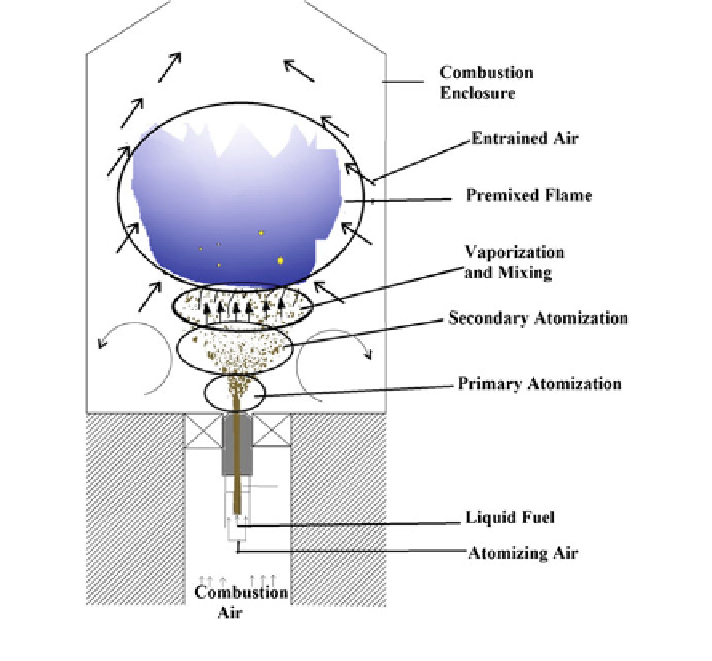Environmental Engineering Reference
In-Depth Information
of either kinetic energy or potential energy, as discussed in Sect.
3
. The atomization
process generally takes place in two steps: during primary atomization, the fuel is
broken into ligaments and blobs at the injector exit. Subsequently, ligaments and
blobs interact with the atomizing air and/or combustion air to undergo secondary
atomization resulting in a fuel spray containing droplets of a wide range of
diameters.
Droplets in the spray vaporize and premix with air, depending upon the
ow,
thermal, and chemical processes. Fuel vaporization depends upon parameters such
as the boiling and/or fuel volatility characteristics, latent heat of vaporization, and
initial droplet diameter. Clean combustion requires appropriate fuel droplet size
distribution, for a range of operating conditions, such that the droplets are both large
enough to penetrate into the combustion chamber, but also small enough to prev-
aporize within the short residence time of the spray/
fl
fl
ame region. If they can be
ignited, large droplets in a spray burn in the diffusion
flame mode, which results in
unacceptably high emissions of NO
X
, carbon monoxide (CO), soot, and unburned
hydrocarbons (UHCs). The LDI combustion concept in Fig.
1
illustrates excellent
fuel prevaporization and fuel
fl
-
air premixing. The fuel and air
fl
ow rates are
Fig. 1 Illustration of lean direct injection (LDI) combustion

Search WWH ::

Custom Search